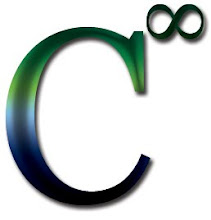*****
2 kilograms of CO2/person/day -- more or less ?
A New Universal Constant
"Thou art weighed in the balances and found wanting" ? [ Daniel 5:27 ]
In my November 20, 2008 post below I defined the Standard International Carbon Micro Credit (SICMC) as approximately 2 kilograms of CO2/person/day -- the amount of CO2 emitted per day per person by cooking with biomass if a human being is to survive at a subsistence level. This equates exactly, of course, to the carbon offset created by instead cooking with solar, for example.
Sadly, this New Universal Constant probably applies only to a protein-poor diet in the Developing World. If the Poor in the Developing World are actually fortunate enough to experience a more "normal" nutritional composition in their diet and a higher caloric intake, then the SICMC could approach 3 - 4 kilograms of CO2/person/day. Whatever, I leave it to environmental and nutrition scientists to debate the fine points and weigh the issues down to the gram.
Once rigorously defined, the Standard International Carbon Micro Credit (SICMC) should be accepted by all governments, NGOs, and carbon project originators, managers & auditors without debate and equivocation. The Poor are already hungry. We should immediately respect their Micro Property Rights and let them claim already what is rightfully theirs.
So taking into account the average family size in the Developing World (5 - 6 persons...?), the daily value of the Carbon Micro Credits a family could earn by cooking with solar or an efficient charcoal stove is substantial for people living on US$ 1/day. For details, see the calculation down below from one Indonesian study prepared for submission to the U.N. CDM (Clean Development Mechanism).
The revenue a family could earn might range from US$ 40 - 100/year or more, depending on offset market prices in Europe. So what if millions or 10s of millions of families reduced their emissions and claimed their credits every year? Would excess carbon offsets be produced? Would market prices drop? If so, who will be victimized? The Poor in the Developing World? Or rich corporations gaming the U.N.'s CDM scheme ?
The answer in short ? -- the loooooong discussions on Means Testing in my posts below of 26 & 28 November 2008. Let the Poor sell their offsets first and at a higher price. Let the Rich find another financial game to play.
Can the well-fed and often overweight Rich in America & Europe submit to the Rule of Common Sense and the Divinity of Compassion and share the Manna of carbon-offsets trading? Or, will they be weighed in the balances and found wanting?
Globally & warmly yours,
David A. Palella
Chief Dreamer
CARBON MANNA UNLIMITED
San Diego, CA
tel: 858-793-0741
email: dpalella@san.rr.com
http://community.keithferrazzi.com/profile/DavidPalella
http://carbonmanna.blogspot.com
--------------------------------
Standard International Carbon Micro Credit (SICMC) --
CO2 Emission Calculation
Reference:
"Clean Development Mechanism (CDM) Solar Cooker Project
Aceh 1, Indonesia", pg. 5, Section 4.
[ authors' full contact info down below ]
An undated PDF document from late 2005 or early 2006...?
This rigorous technical proposal prepared for submission to the U.N. Clean Development Mechanism (CDM) states that the average family not cooking with biomass reduces CO2 emissions by 3.5 tons/year. Very similar figures from JPMorgan's British subsidiary Climate Care echo this amount.
So the value of Carbon Credits from using 1 solar cooker/year/family is:
3.5 tons CO2/device/year X $25/ton or credit = $87.50
Based on December 2008 forward contract price from:
http://www.carboncapitalmarkets.com/home.php
Therefore, let's define a Standard International Carbon Micro Credit (SICMC) for a family as the CO2 saved/day by not cooking with biomass =
(3.5 tons/year x 2,000 lbs/ton)
--------------------------------------- = 19.18 lbs/day of CO2/family
365 days/year
This carbon credit calculation is only for CO2 emitted when burning deadwood or other biomass such as dried grass, cow dung, etc. Of course, an assumption about average family size must be made to find the Standard International Carbon Micro Credit (SICMC) per person.
<<------------------------------------------------------------>>
Reference Details:
"Clean Development Mechanism (CDM) Solar Cooker Project
Aceh 1, Indonesia", pg. 5, Section 4.
Authors:
Herliyani Suharta
Agency for the Assessment & Application of Technology
The Center for Energy Technology
(BPPT-BBTE)
c/o PUSPIPTEK, Serpong
Tangerang, Indonesia
email: herli@iptek.net.id
Dieter Seifert
Advisor
CDM Solar Cooker Project
Development Germany
email: bdiv.seifert@t-online.de
AAM Sayigh
World Renewable Energy Network
Brighton, U.K.
email: asayigh@netcomuk.co.uk
<<------------------------------------------------------------>>
*****
Dedicated to new paradigms for self-sustaining & self-funding Micro-PROFIT-Sharing based on Carbon Micro-Credits (CMCs) realized and sold by Individuals in the Developing World who reduce their carbon footprints. Individual micro-property rights should extend to one’s own carbon footprint, and individuals should be free to monetize their carbon offsets for the benefit of their families. CMCs may be easily converted to e-money, cell-phone minutes, or any other non-inflatable store of value.
Followers
Blog Archive
-
▼
2008
(28)
-
▼
December
(14)
- The All-you-can-eat Micro Carbon Buffet !
- The Laws of Nature and Carbon Footprints -- Grrrr ...
- Global Moral Lipodystrophy & the Micro Revolutions
- The Standard International Carbon Micro Credit (SI...
- Carbon Micro Property Rights & the Death of Microf...
- The Foreign-Aid Micro Credit in a Time of Famine
- Civil Disobedience & Carbon-Market Inequities
- School-Lunch Carbon-Micro-Offset Program
- Toying with Planet Earth -- Ho! Ho! Ho! -- ??
- The Foreign-Aid Micro Credit (FAMC)
- "Caution: Inhaling Green House Gases May Be Hazard...
- GRAND CHALLENGES of CARBON MICRO CREDITS
- The CARBON FOOTPRINT BILL of RIGHTS
- CARBON MANNA
-
▼
December
(14)
About Me

- David Anthony Palella
- San Diego, California, United States
- Carbon Micro-Credit advocate for "The Bottom of the Pyramid"; Defender of Carbon Micro-Credit property rights worldwide